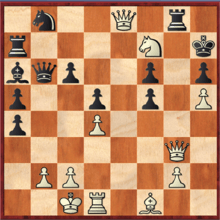Sequential game

In game theory, a sequential game is a game where one player chooses their action before the others choose theirs.[1] Importantly, the later players must have some information of the first's choice, otherwise the difference in time would have no strategic effect. Sequential games hence are governed by the time axis, and represented in the form of decision trees.
Unlike sequential games, simultaneous games do not have a time axis as players choose their moves without being sure of the other's, and are usually represented in the form of payoff matrices. Extensive form representations are usually used for sequential games, since they explicitly illustrate the sequential aspects of a game. Combinatorial games are usually sequential games.
Games such as chess, infinite chess, backgammon, tic-tac-toe and Go are examples of sequential games. The size of the decision trees can vary according to game complexity, ranging from the small game tree of tic-tac-toe, to an immensely complex game tree of chess so large that even computers cannot map it completely.[2]
In sequential games with perfect information, a subgame perfect equilibrium can be found by backward induction.
References
- ↑ http://www-bcf.usc.edu The Path to Equilibrium in Sequential and Simultaneous Games (Brocas, Carrillo, Sachdeva; 2016).
- ↑ Claude Shannon (1950). "Programming a Computer for Playing Chess" (PDF). Philosophical Magazine. 41 (314).